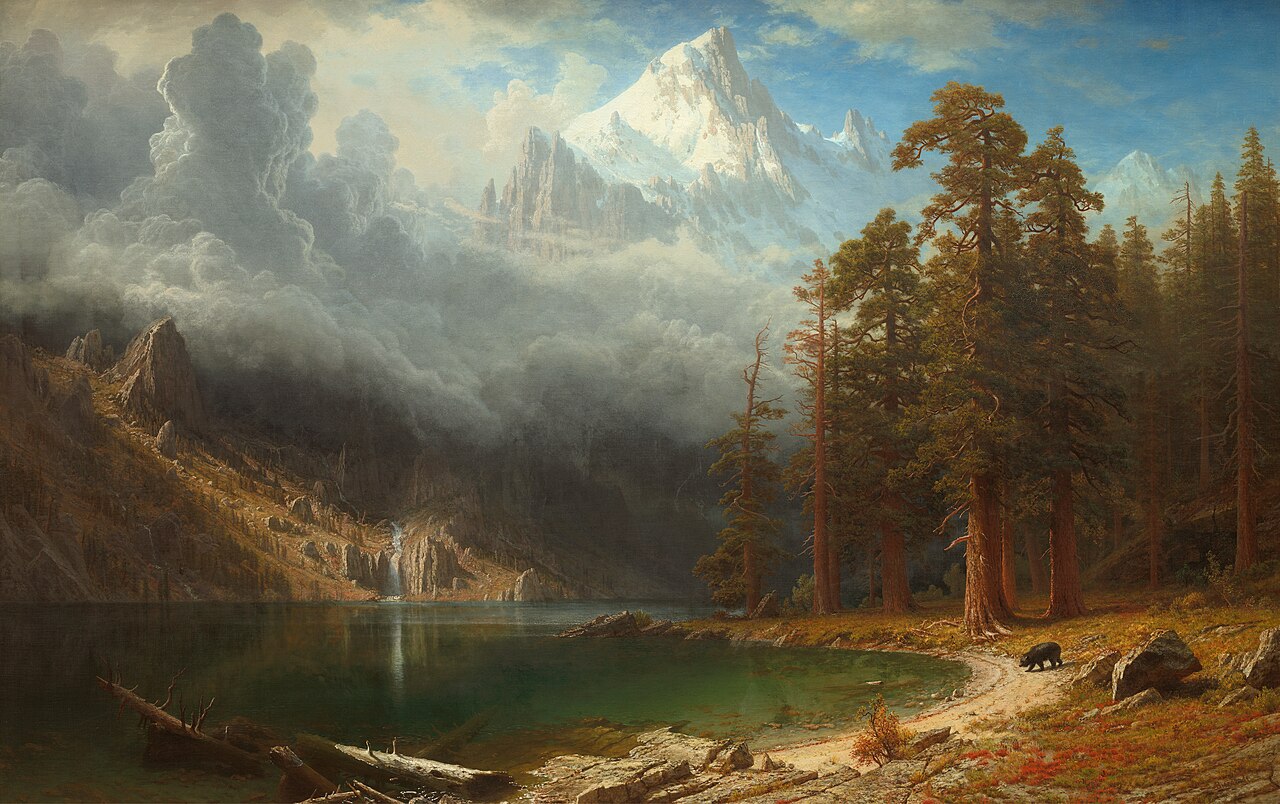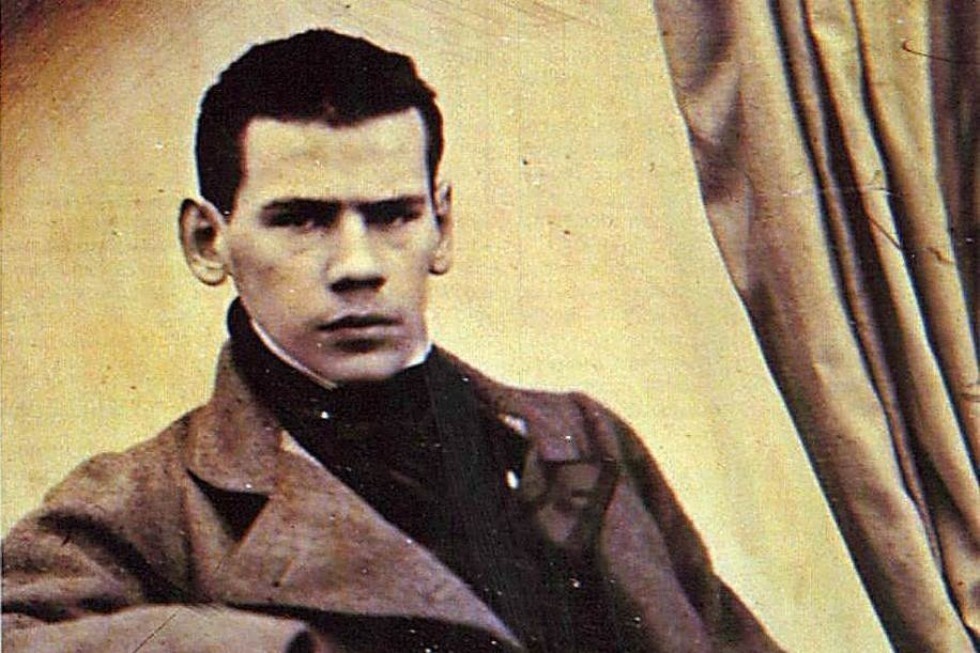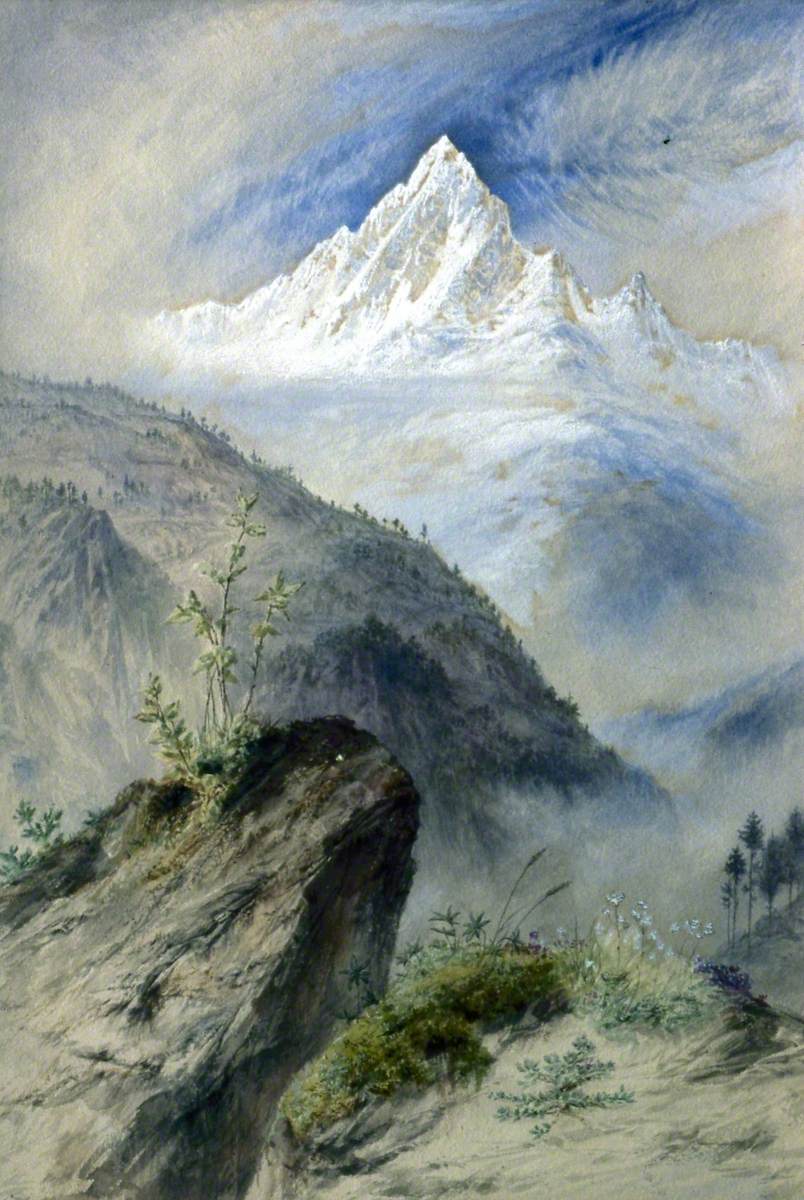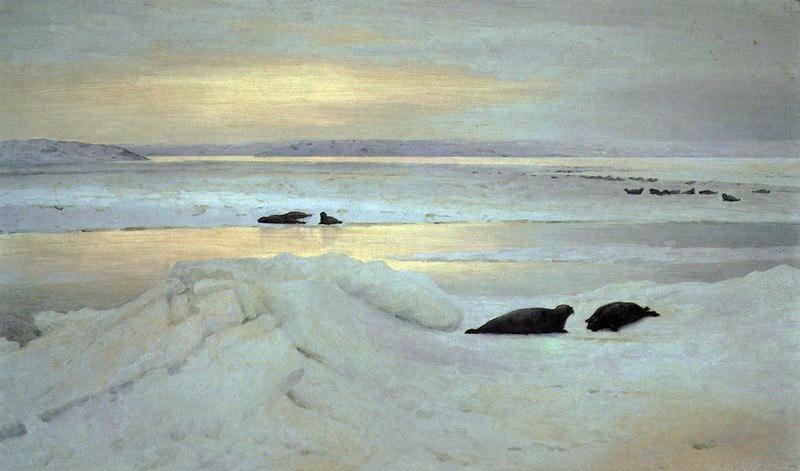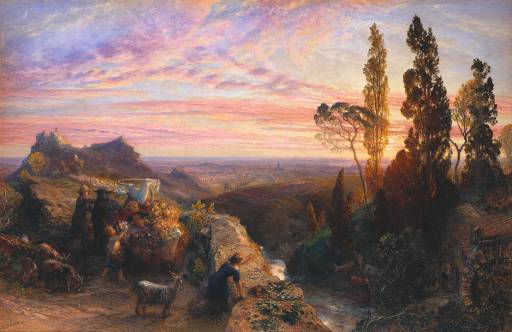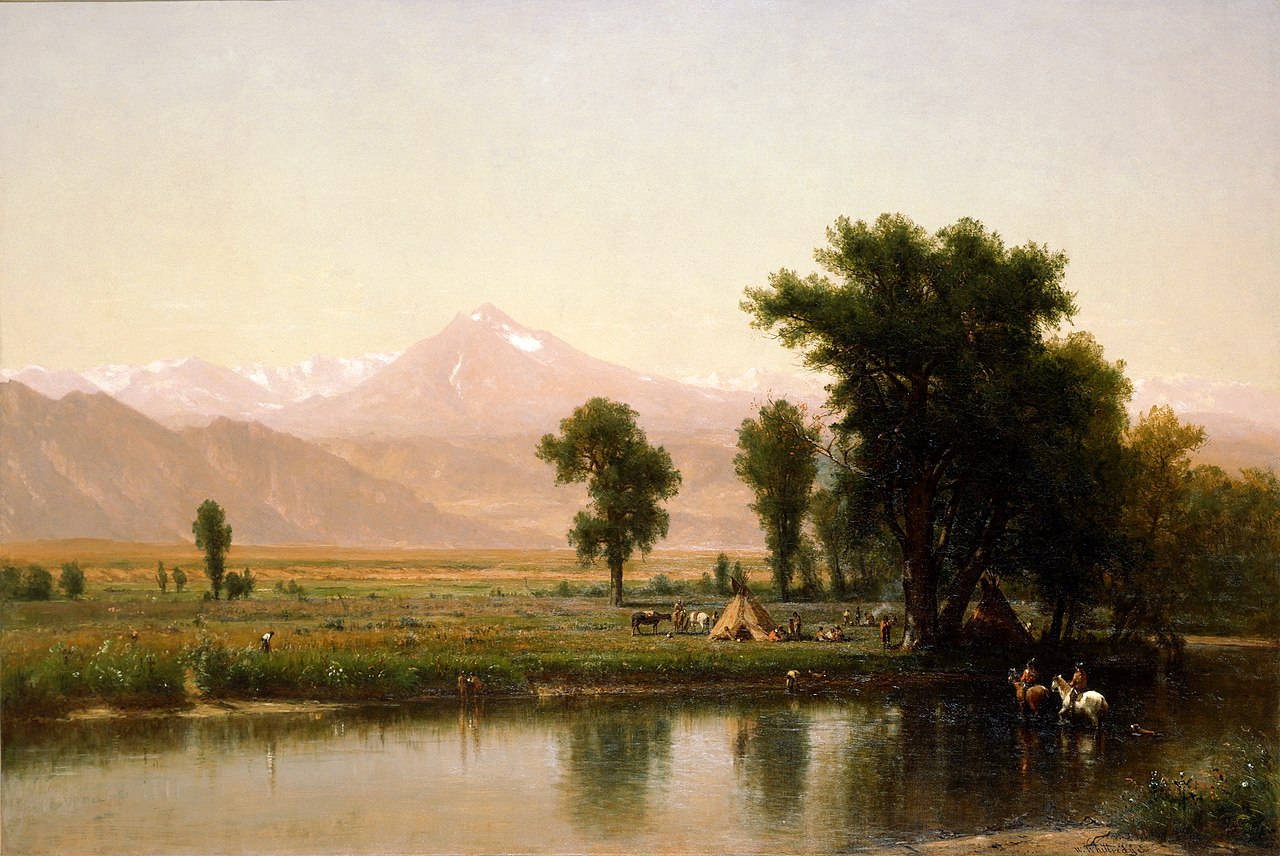|
|
Post by Woland on Jun 15, 2020 11:46:38 GMT -5
William Cowen (1791-1864) was born in Rotherham, West Yorkshire and taught in Sheffield. He published landscape art of Italy and Switzerland along with his Yorkshire landscapes but couldn't make a profit from them. He later moved to London to help his travelling, one trip through Corsica documenting the landscapes of Napoleon's early life was quite novel for its time.
View of Rotherham
P.C Skovgaard (1817-1875) learned art from his mother before being sent to the Royal Danish Academy of Art. His time in Copenhagen saw him mingle with several notable people, landscape painting eventually took precedent over other genres in his art, He travelled around Denmark first before he ventured to Italy in 1854, later exhibiting his work in London and Paris. After his wife died in 1868 he suffered from apoplexy, recovered quickly but it would take his life before he hit 60.
View of Deer Garden
Albert Bierstadt (1830-1902) was an American painter of the Hudson River School. Born in Prussia he moved to Massachusetts at 1. He studied in Dusseldorf before moving back to America, painting his way through the North East, he became famous for his paintings of the US expansion westwards. A successful European tour didn't cut it with the critics back home, they criticised his work for using too much light. He moved to the Bahamas to aid his wife's tuberculosis, while a fire at his New York studio destroyed most of his paintings, after his wife died in 1893 his epic landscapes fell out of fashion, attacked for their "theatricality". His reputation has grown since his death, albeit with some reservations.
Mount Corcoran (1876)
|
|
|
|
Post by Woland on Jun 16, 2020 11:24:04 GMT -5
William Stanley Haseltine (1835-1900) was born in Philadelphia, studying at the University and at Harvard. In the mid 1850s he met up with fellow American painters in Dusseldorf and travelled through Switzerland to Rome. Upon his return to the US he settled in New York painting a mixture of European and New England landscapes. After his first wife died he relocated to Europe with his second wife, continuing to alternate between Europe and the US until he died from pneumonia in Rome
Castle Rocks at Nahant,Massachusetts(1865)
John Feary (1745-1788) was an English landscape painter, mostly commissioned to paint and sketch the view from parks and mansions of the nobility and gentry.
One Tree Hill, Greenwich (1779)
Willem Roelofs (1822-1897) was born in Amsterdam, moved to Utrecht then the Hague until 1847 when he settled in Brussels. Influenced by the Barbizon school, he enjoyed painting huge clouds and landscapes with cattle. He would be a key figure in the development of the Hague school of landscape painting. He also became an expert in beetles, founding the Belgian association for Entomology; his extensive beetle collection became part of the Natural History Museum in Brussels. In 1880 he convinced a certain Vincent Van Gogh to attend the Royal Academy in Brussels.
Landscape with a brewing thunderstorm (1850)
|
|
|
|
Post by Woland on Jun 16, 2020 13:52:35 GMT -5
Thomas Birch (1779-1851) was born in London, his father was an engraver. He moved to the US at 15 and began portraits and landscapes until he found his ideal genre: seascapes. His most famous works involve the War of 1812 and landscapes of Philadelphia.
Sedgeley Park (1819)
An Gyeon was a Korean artist in the early Joseon period. He was an official painter for the Joseon Court
Dream Journey to the Peach Blossom Land
Juan de Barroeta (1835-1906) was born in Bilbao, studied in Madrid and returned to his native Bilbao, painting portraits of former Spanish Kings, illustrations and set decorations for operas.
View of El Abra, Bilbao (1886)
|
|
|
|
Post by Woland on Jun 17, 2020 13:41:15 GMT -5
George Salders (1825-1873) was born in Portsmouth and settled in London. Mostly known for his paintings of Surrey and Hampshire, he also travelled through Ireland.
Mountain Landscape
Andreas Edvard Disen (1845-1923) was a Norwegian painter known for his mountain landscapes. After a surprise visit from the King of Norway he received enough money to attend the Academy of Fine Arts in Karlsruhe. Later on he'd lose a public dispute with an influential art circle yet maintained his romantic painting style even after it went out of fashion
Mountain View (1884)
Emilio Sanchez Perrier (1855-1907) was a Spanish painter and watercolourist who also painted Oriental subjects. Born in Seville, he studied in Madrid and visited Paris. His paintings of Venice are considered his best work.
Triana (1888)
|
|
|
|
Post by Woland on Jun 18, 2020 19:32:03 GMT -5
Vladimir Kazantsev (1849-1903) was one of the first professional artists to hail from Ekaterinburg. Having studied law in Moscow, he studied art in St. Petersburg in 1880, moving back to his native Ekaterinburg before spending his final years in Poltava.
In the Urals (1888)
Elijah Walton (1832-1880) was a Birmingham-born painter known for his Alpine paintings.
Monte Viso (1857)
Thomas Moran (1837-1926) started his artistic career hating his own engravings, he much preferred watercolour and illustrations. Inspired by J.M.W Turner, he continued illustrations and began painting the rocky mountains, he was a key figure in getting Yellowstone recognised as a National Park. Such is his renown, one of his paintings (The Three Tetons) sits in the Oval Office.
Grand Canyon of the Yellowstone (1901)
|
|
|
|
Post by Woland on Jun 19, 2020 13:18:52 GMT -5
Francis Danby (1793-1861) was born in Ireland, moved to London on tiny funds to make his own luck in art, so strapped for cash they had to walk Danby turned up in Bristol and stayed there for 10 years, painting watercolours to pay the bills while becoming a member of the informal Bristol School of painting. Later spending some time in Paris and London, he died in Devon, he's considered one of the foremost British Romantic artists of his time.
View of the Avon Gorge (1822)
Alexander Borisov (1866-1934) was a Russian painter known for his Arctic landscapes. Born in Arkhangelsk, he studied at St. Petersburg and devoted himself to painting the arctic landscapes he knew so well, he went on 3 expeditions to the Arctic and became the leading light in the Arctic landscape genre.
Spring Polar Night (1897)
Elias Muukka (1853-1938) was a Finnish artist who studied in Helsinki, Dusseldorf and Paris. Mainly known for landscapes around Karelia, he also held several teaching posts throughout his life.
Landscape in Moonlight (1914)
|
|
|
|
Post by Woland on Jun 20, 2020 13:19:18 GMT -5
John Atkinson Grimshaw (1836-1893) was one of the finest Victorian painters of moonlight. Born in Leeds, he left his clerk job for the Great Northern Railway to become a painter. In the 1880s he set up a studio in London close to James Abbott McNeill Whistler, delivering stunning townscapes around the UK until his death.
Glasgow, Saturday Night
Martinus Rorbye (1803-1848) was born in Norway to Danish parents, he studied at the Danish Academy and would become known for his extensive travels across Europe and the Mediterranean; in 1830 he befriended Hans Christian Andersen on a steamboat to Jutland. He was also known to paint landscapes in lesser-travelled places, notably Skagen the northernmost town in Denmark.
Stave Church, Borgund Norway (1833)
Pericles Pantazis (1849-1884) was a Greek painter who began studying in Athens before moving to Munich and Paris. With a recommendation from Edouard Manet he moved to Brussels, received commissions from a Greek merchant and turned his back on academic art. He died of tuberculosis at 34 years of age.
Summer Day at the river (1880)
|
|
|
|
Post by Woland on Jun 21, 2020 13:14:26 GMT -5
Gunnar Berg (1863-1893) was born in Lofoten in Norway, he swapped a merchant career for art. For the last 10 years of his life he worked in Germany, returning to his native Lofoten in the summers to create his best-known works. After losing a leg through cancer he contracted pneumonia and died at age 30.
The view of Trollfjord (1890)
Samuel Palmer (1805-1881) was a London-born artist who became known for his romantic pastoralist artwork. He spent 9 years living in Kent, depicting the place as a magical wonderland before moving to London to sell his work and earn money from teaching. With his money running low he had to prioritise watercolour to appease the public, but he had to continue working as a private drawing master to beef up his income. After the death of his eldest son he moved to Surrey and lived off very little fortune. After he died his brother burned most of his artwork, Palmer didn't gain attention until well after his death.
A dream in the Apennine (1864)
Carl Spitzweg (1808-1885) was born near Munich, Germany. Originally trained to be a pharmacist, he took up painting by copying the Northern Renaissance masters, once receiving an inheritance he could have a go at painting. He's considered an important German Romanticist painter.
Girls on the Mountain Pasture (1870)
|
|
|
|
Post by Woland on Jun 22, 2020 8:03:33 GMT -5
James Webb (1835-1895) was a British painter of marine views and landscapes, he lived all his life in Chelsea, London.
View of San Sebastian (1870s)
Johan Christian Dahl (1788-1857) is often described as the father of Norwegian landscape painting. Born in Bergen to a modest fisherman, he was educated at the nearby Cathedral while another mentor allowed the 23 year old Dahl to study in Copenhagen. The Flemish landscape artists along with the surrounding Danish countryside was a big influence on his future trajectory. After success in the academy he resolved to travel abroad, setting up shop in Germany befriending Caspar David Friedrich. He made more travels around Italy and returned to Norway every 5-6 years, even helping to found the National Gallery of Norway, despite spending much of his career in Germany.
Winter at the Sognefjord (1827)
Anton Altmann (1808-1871) was an Austrian painter, his father and grandfather were both artists. He studied in Vienna and gave lessons to a Hungarian count.
Panorama of Salzburg (1855)
|
|
|
|
Post by Woland on Jun 23, 2020 4:53:38 GMT -5
William Marlow (1740-1813) was born in Southwark, London. Initially he painted views of country houses before travelling to France and Italy. Influenced by Richard Wilson and Canaletto, he mostly stuck to British country scenes.
Blackfriars Bridge & St. Paul's Cathedral (1788)
Hermann August Cappelen (1827-1852) was born into a noble Norwegian family in Skein. After studying in Norway he studied in Dusseldorf from 1846-1850, making occasional painting trips back home. The last two years of his life were his most productive in spite of the gastric cancer which ended his life at just 25 years of age.
Waterfall in lower Telemark (1852)
Worthington Whittredge (1820-1910) was born in a log cabin in Ohio. He painted landscapes and portraits in Cincinatti before spending 10 years in Europe, studying in Dusseldorf. He settled in New York and painted his way across the Great Plains to the Rocky Mountains, becoming friends with fellow Hudson River School members. He spent the last 30 years of his life in New Jersey.
Crossing the River Platte (1871)
|
|


